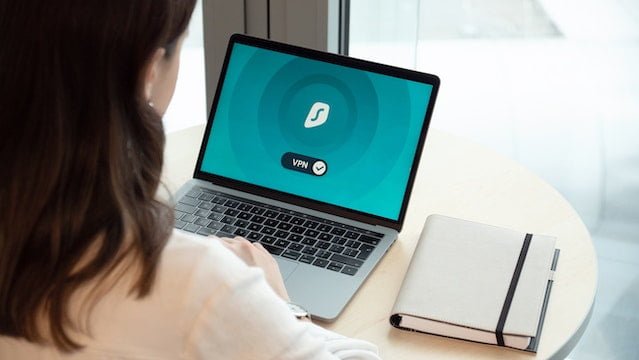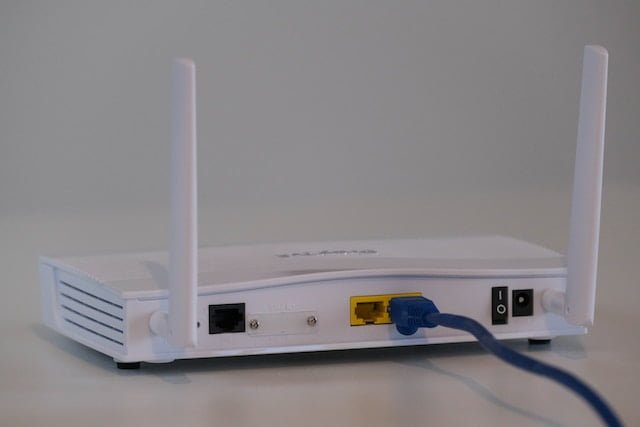In today’s interconnected world, privacy has become more than just a luxury—it’s a necessity. As you weave through the digital realm, the question isn’t just about how to set up a Virtual Private Network on your router but why it’s a vital step in safeguarding your online identity. That’s why we did thorough research with a friendly team from a reputable tech blog, and here’s everything you need to know about how to set up a VPN on your router.
Step-by-Step Guide to Set Up a VPN on Your Router
A VPN, or Virtual Private Network, is the unseen superhero of the digital cosmos. It cloaks your internet activity in a shroud of encryption, keeping the prowling eyes of cybercriminals, advertisers, and even Internet Service Providers (ISPs) at bay.

And while VPN apps on individual devices are beneficial, installing this type of network on your router extends this protection to every connected device in your home or office. The best part is – even though it seems complicated, it’s far more simple than mastering different web development tools, for instance. So let’s learn how to set up a VPN on your router!
Step One: Selecting the Right VPN Service
Embarking on the journey to fortify your online privacy begins with choosing the appropriate VPN service. In this digital age, the market is flooded with an overwhelming array of services, all promising the highest level of security. However, the truth is that each service has its unique strengths and weaknesses.
Some shine in providing lightning-fast connection speeds, allowing seamless streaming and swift downloads. Others pride themselves on their impenetrable security measures, boasting features like 256-bit encryption and a no-logs policy. Certain services provide a vast network of global servers, ensuring you can bypass geo-restrictions from virtually anywhere in the world.
Your ideal VPN should be a blend of these features, molded to suit your specific needs. Assess your requirements, whether streaming foreign content, masking your digital footprints, or enhancing your overall browsing experience. Then, embark on a quest to find the service that resonates with these requirements, all while fitting snugly within your budget.
Step Two: Identifying a VPN-Compatible Router
After you’ve handpicked the perfect VPN service, the next pivotal step is ensuring you own a router that can actually support this setup. Regrettably, not all routers are designed with this compatibility in mind. Most basic routers, while adept at connecting your devices to the internet, lack the advanced features required to handle a VPN connection.

Routers that support VPN client mode are the key players here. They can communicate directly with your chosen service, effectively creating a secure tunnel for your internet activity. Therefore, before trying to set up anything. check your router’s specifications, or delve into its settings to ensure it is in this mode.
In case your router fails the compatibility test, it may be time for an upgrade. While it is an added expense, investing in a VPN-compatible one can amplify the security of every connected device, thus justifying the cost.
Step Three: Configuring Your VPN on Your Router
With a VPN service in hand and a compatible router at the ready, you’ve cleared the initial hurdles. Now comes the crucial stage of setting up this type of network on your router, a process that involves some technical prowess but is achievable with attention to detail.
The configuration process varies depending on your router model and VPN service. Typically, you’ll need to navigate your way to your router’s administration page through a web browser. The page URL is usually printed on the router itself or listed in its manual.
Once you’re in, look for the VPN settings—this could be under ‘advanced settings’ or a similarly titled section. Here, you will input your details. These can include your account username and password, as well as the server address you want to connect to. All these details will be provided by your VPN service.
However, as you traverse this setup journey, it’s worth echoing the advice from the seasoned team at WP Full Care. This is a delicate process, and a minor error could render your VPN ineffective, leaving you exposed despite your efforts. That’s why they advise double-checking all the settings before finalizing the setup.
Suppose you’re grappling with the technical aspects of the setup, feeling like a fish out of water amid IP addresses and encryption protocols. In that case, you may consider reaching out for professional assistance. An expert can streamline the setup, ensuring all is in order for optimal function.
Step Four: Testing Your VPN
Once you’ve crossed the technical terrain, it’s time to test the waters. This step is crucial to verify that your setup is functioning as intended.
To do this, connect a device to your router and visit a site that displays your IP address—numerous free websites are available for this purpose. Simply Google “What’s my IP?” and you’ll quickly find out. If the site shows the IP address provided by your Virtual Private Network as opposed to your actual IP address, you can pat yourself on the back. You’ve successfully configured a VPN on your router!

However, if the site displays your IP address, it suggests that the VPN isn’t properly configured, and you may need to revisit the setup process or seek professional help. However, as technology continues to advance, we can surely expect even simpler solutions to appear soon.
Beyond the Technical: Cultivating Online Safety
Securing your online space with a VPN is undoubtedly a commendable move. However, it’s worth emphasizing that setting this up on your router is just one piece of the vast puzzle that is online security. It’s essential not to let the newfound privacy lull you into a false sense of absolute security.
Aside from using a Virtual Private Network, there are other practices you should integrate into your digital life. These include using robust, unique passwords for your accounts, keeping your devices and applications up-to-date, and cultivating a discerning eye for suspicious links and websites.
Online safety is an ongoing endeavor in this digital age, a relentless battle against ever-evolving threats. However, by learning how to set up a VPN on your router and incorporating safe browsing habits, you’re well on your way to constructing a formidable digital fortress

